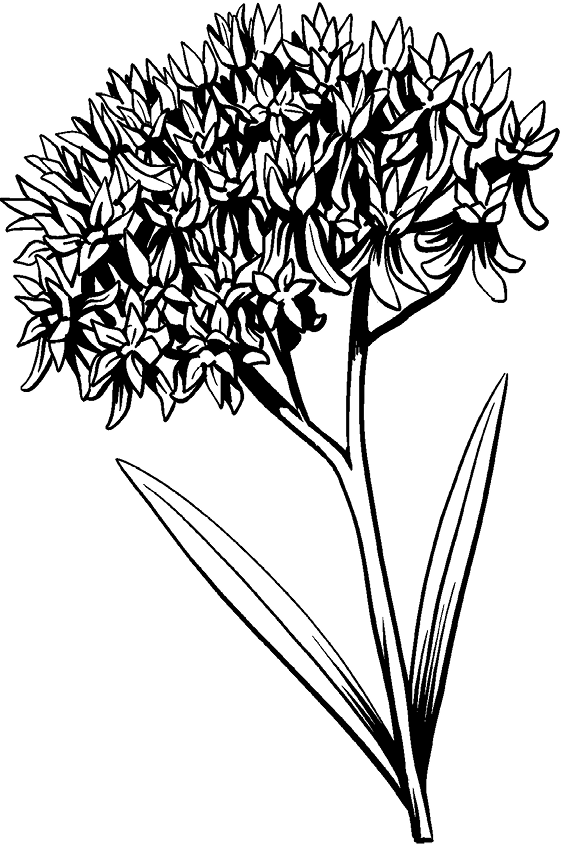Butterfly Weed and
Essentiality
Asclepias tuberosa

Butterfly weed is a wildflower in the milkweed family. It stands three to four feet tall with orange tiny flowers clustered together. In the fall the seedpods release the cottony seeds that milkweed plants are known for. Bees, hummingbirds, and butterflies love it.
Butterfly weed is also known as pleurisy root. It was first used by Native Americans, who introduced it to the Europeans. The plant was a remedy for pleurisy and other respiratory conditions that made breathing difficult. Because of its effectiveness, it was included in the United States Pharmacopeia in the early 1900s.33
Butterfly weed joined my garden family in the last few years after I learned that even adding one plant to your home garden can help the monarch caterpillars. It’s part of my butterfly garden bed, along with bee balm and Echinacea.
Butterfly weed, like all members of the milkweed family, is crucial to the survival of monarch butterflies. Monarchs are in danger because urbanization and the increased use of herbicides have reduced the availability of their food. Monarch butterflies can feed on many different flowers, but the caterpillars must have milkweed to survive. Without caterpillars, there cannot be butterflies.
Any milkweed species will meet the food requirements of monarch butterflies; however, it is important to choose a variety recommended for your specific area. The tropical varieties available at some garden centers will flower longer, and this encourages the butterflies to not migrate, which can result in their death.34 Butterfly weed meets the requirements for most of the United States, but you can confirm this by entering your zip code at the website www.monarchwatch.org.
Historically, the plant played a critical role in supporting breathing, an essential part of life. It also plays a critical role in the life cycle of monarchs. Because of these relationships, essentiality is the energetic correspondence of butterfly weed. When you turn your mindful awareness to this correspondence, consider what is critical and nonnegotiable for your existence.
In our consumer culture, it is easy to confuse what is essential (our needs)with what we simply want. As a parent and grandparent, I’ve often heard children say they need something when it is actually a desire; they confuse desperately wanting something with needing it. Of course, it is always easier to notice these behaviors in others. If I am truthful, I know I also can get lost in the call of bright and shiny new things, especially in garden catalogs. This isn’t about judging people who want things that are shiny and new; it’s about bringing awareness to the difference between want and need by evaluating what is essential in our lives.
As you go about your day, be mindful of what is essential to your well-being.
Certainly, food, air, water, and shelter are essential to your physical well-being. Start by recognizing their importance. Remember, though, that life is not only about physical well-being. Be intentional in noticing what is indispensable to your emotional and mental well-being as well—friendship, community, spirituality, music, books, and solitude might fit into this category.
Morning Attunement Questions
• What connections do I have with butterfly weed and essentiality?
• Where else in the green world or in my life do I observe essentiality?
• What does this correspondence feel like?
• How can I describe this energetic attribute of essentiality?
• Where does this correspondence of essentiality resonate most strongly in or around my body or in my life?
Daily Integration Questions
• In what ways is the world reflecting butterfly weed or essentiality back to me?
• What nuances and shades of meaning do I notice about butterfly weed and essentiality?
Evening Reflection Questions
• Where and how did I experience butterfly weed or essentiality today?
• How did I embrace essentiality today?
• What wisdom does butterfly weed’s correspondence of essentiality bring to my life?